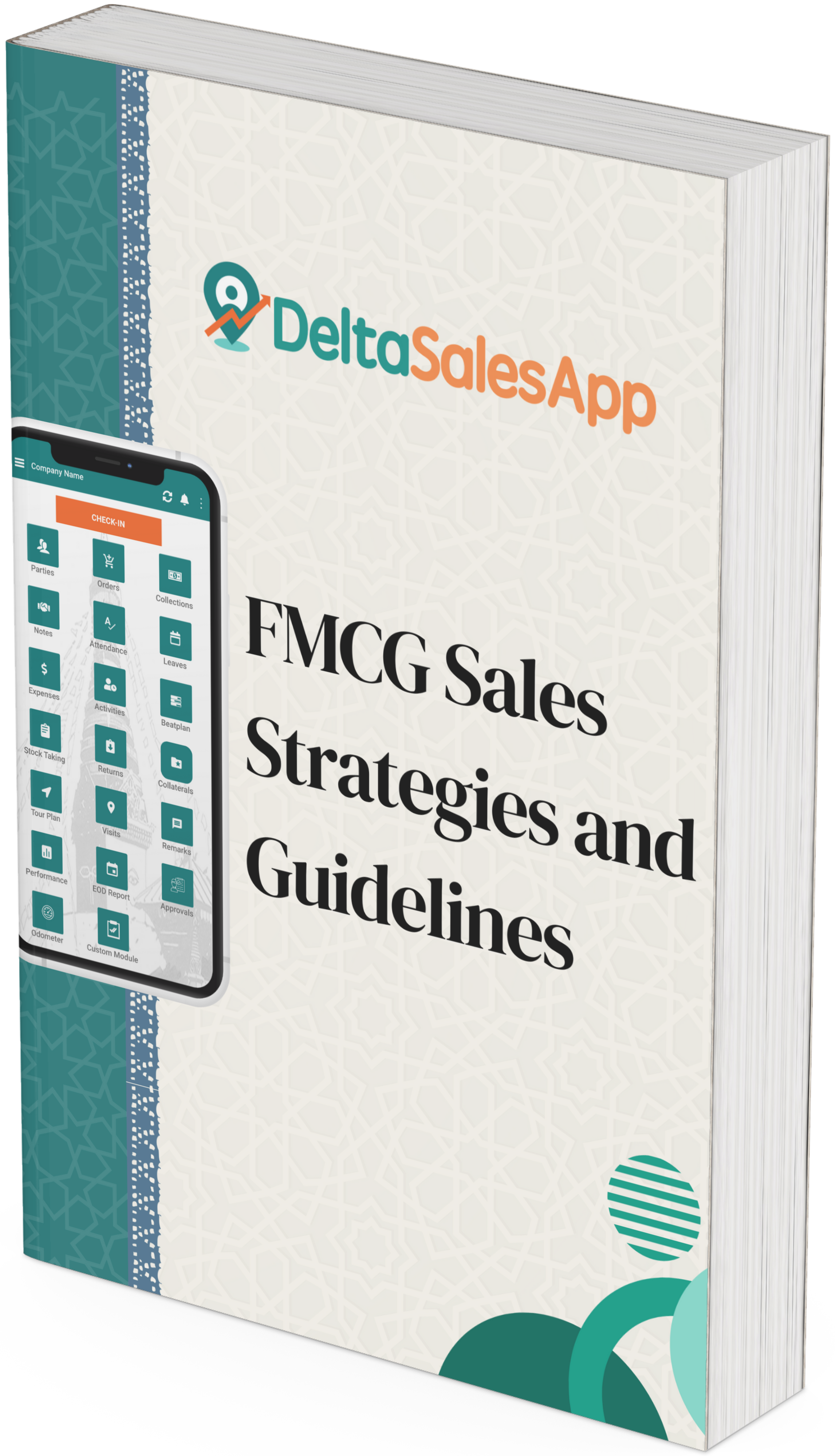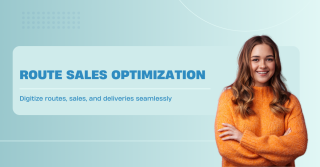Mastering Data Maturity for Retail Execution Success
_1747737122.png)
In the fast-moving world of consumer goods, retail execution has become more than just a checklist activity—it's a powerful lever for growth. Whether you're managing a small field team or coordinating a nationwide sales force, understanding and mastering your data maturity is essential to optimizing every store visit and driving measurable ROI.
This blog explores how CPG brands can progress through the stages of data maturity—from tracking basic activities to unlocking performance-driven insights. With the right mix of strategy, tools, and mindset, your team can turn field data into retail success.
Why Data Maturity Matters in Retail Execution
The concept of data maturity refers to how effectively a brand collects, manages, and acts on its data. In the context of retail execution, it defines how well your field efforts translate into sales results.
CPG companies collect massive amounts of data from the field—store visits, shelf conditions, competitor activity, sales transactions, and more. But without a clear data strategy, these insights often remain siloed or underutilized.
Mastering data maturity helps brands:
Make smarter, faster decisions in the field
Optimize coverage and execution at each retail touchpoint
Align store activities with real-world sales performance
Justify budgets and resources with clear ROI metrics
The Three Stages of Data Maturity in Retail Execution
1. Activity Data: The Foundational Stage
Most brands begin their retail execution journey by tracking activity data. This includes the basics:
Which reps visited which stores?
How long did each visit last?
What tasks were completed?
Using a field sales app, managers can monitor:
Daily rep routes and time spent in-store
Task completion rates (audits, surveys, merchandising)
Number of store visits per rep
While this data ensures accountability and consistency, it only scratches the surface. It tells you what was done, not how well it was done or what impact it had.
Still, activity data is critical for building discipline and visibility. It sets the stage for deeper insights.
2. Observational Data: The Operational Advantage
Once a brand establishes consistent field activity, the next step is to gather observational data. This includes detailed in-store conditions, such as:
Shelf share and product visibility
Planogram compliance
Pricing and promotional presence
Competitor displays and stock levels
With the help of a modern sales management software, reps can report these insights directly from the store. This helps brands answer questions like:
Is our product placed at eye level or on the bottom shelf?
Are our competitors running promotions?
Do our displays follow brand guidelines?
At this stage, in-store execution moves from reactive to proactive. Field reps act as the brand’s eyes and ears, identifying gaps and influencing in-store presence in real time.
Observational data elevates retail execution by enabling fast decisions that directly affect shopper experience and conversion.
3. Sales & POS Data: Performance-Driven Execution
The final and most impactful stage of data maturity connects retail execution to sales outcomes.
By integrating POS (Point of Sale) data, supply chain insights, and retail analytics, brands gain a full picture of execution performance. This allows teams to:
Measure the sales impact of store visits
Identify out-of-stock (OOS) and on-shelf availability (OSA) issues
Attribute uplift to specific promotions or displays
Optimize field resources based on revenue potential
Imagine knowing that a store visit on Tuesday triggered a 12% sales spike—or detecting low sales in a region due to poor shelf restocking, not poor demand. That’s the power of connecting activity + observation + sales into one ecosystem.
High-performing brands rely on data-driven tools like AI-powered dashboards and predictive analytics to forecast demand, prioritize visits, and close execution gaps before they hurt revenue.
Adapting Your Data Strategy by Brand Size
Not every brand has access to enterprise-grade tools. But that doesn’t mean smaller players can’t master retail execution.
Here’s how brands of different sizes can adapt their data maturity strategy:
For Small Brands :
Use lightweight field sales apps to track visits and tasks
Focus on reliable activity logging and photo-based observations
Set KPIs for visit frequency and basic merchandising compliance
For Mid-Sized Brands :
Introduce sales management software with integrated dashboards
Begin collecting and analyzing shelf data and competitor info
Align promotions with POS data from top retailers
For Large Enterprises :
Integrate CRM, ERP, and POS platforms into one data ecosystem
Use AI/ML for predictive insights and dynamic field routing
Track cross-channel performance and optimize resource allocation
Scaling smart means knowing your current maturity level and taking the next best step—not trying to do everything at once.
Combining Data Sources for 360° Retail Execution
The real value of data maturity comes from integration. When you combine multiple data streams, your retail execution becomes smarter, faster, and more effective.
A Unified View Includes:
Field Data: Visits, tasks, observations
Sales Data: POS transactions, inventory levels
Supply Chain Data: Stock movement, delivery timelines
Digital Signals: Marketing campaign responses, shopper behavior
This holistic view empowers teams to:
Prioritize high-opportunity stores
Forecast execution issues before they surface
Tie in-store actions directly to revenue growth
Justify display investments and promotions with real data
For example, let’s say POS data shows declining sales at a chain of stores. Your field team checks and finds those stores are consistently out of stock—despite compliant shelf setups. This points to a restocking or supply chain issue, not poor execution.
With this level of insight, your team can fix the root cause, not just treat the symptom.
How to Begin Your Data Maturity Journey
Step 1: Assess Your Current Maturity
Ask yourself:
Are we consistently tracking rep activity?
Do we gather in-store observations?
Can we measure the sales impact of field visits?
Step 2: Identify Gaps
Missing observational reporting?
No POS data integration?
Limited visibility into regional performance?
Step 3: Select the Right Tools
Start with a field sales app that simplifies visit tracking
Add layers with sales management software for dashboards and analysis
Work with retail partners to access POS or inventory data
Step 4: Train and Empower Your Team
Teach reps how to collect quality in-store data
Align KPIs with execution and sales outcomes
Reward data-driven decision-making
Going Beyond the Basics: From Reports to Action
Reports are useful—but insights that drive action are game changers. Mature brands focus on converting raw data into:
Store-level strategies
Regional execution priorities
Measurable sales performance
For example:
If one display format consistently boosts weekly sales by 18%, double down on that layout
If stores with high visit frequency have better compliance, adjust rep schedules to match
Smart retail execution isn’t about doing more—it’s about doing what works, more often.
Conclusion: Make Every Rep Visit Count
In a crowded, competitive market, mastering data maturity is your edge. From logging visits to linking in-store execution with sales spikes, every step you take on the maturity curve improves your ROI.
Whether you’re a regional brand or a global player, start with what you have. Identify what’s missing. Invest in the right tools, like field sales apps and sales management software, and evolve your data approach as you grow.
Because in modern retail, retail execution isn’t just a task—it’s a strategy. And those who use data wisely, win.
Frequently Asked Questions (FAQs)
1. What is data maturity in retail execution?
Data maturity in retail execution refers to how effectively a brand collects, analyzes, and uses field and sales data to improve in-store performance. It progresses from tracking basic rep activities to using advanced sales and POS data to drive strategic decisions.
2. How can a field sales app help improve retail execution?
A field sales app streamlines store visit tracking, task completion, and in-store data collection. It empowers reps to report real-time insights, helping managers ensure better retail execution and accountability.
3. What role does sales management software play in CPG retail?
Sales management software integrates field data, sales performance, and reporting into one platform. It helps brands monitor execution, analyze KPIs, and make data-driven decisions across sales territories.
4. Why is observational data important in in-store execution?
Observational data—like shelf placement, pricing, and competitor activity—gives context to field visits. It helps CPG brands assess in-store execution quality and take corrective actions to enhance visibility and compliance.
5. How can small brands benefit from retail execution data?
Even small brands can use basic tools to track field activities and collect store-level observations. Over time, these insights can guide smarter store strategies, improve product presence, and drive local sales growth.
🔍 Also Check
👉 Strong Retail Teams Drive Success: Key Strategies For Growth
👉 Enhance Leadership Visibility And Team Success In Retail
🌟See What Users Say About Us!
Delta Sales App, trusted by businesses for streamlining sales processes and boosting productivity, is highly rated on top review platforms.
See what real users have to say about us:
⭐ Delta Sales App on Software Advice









